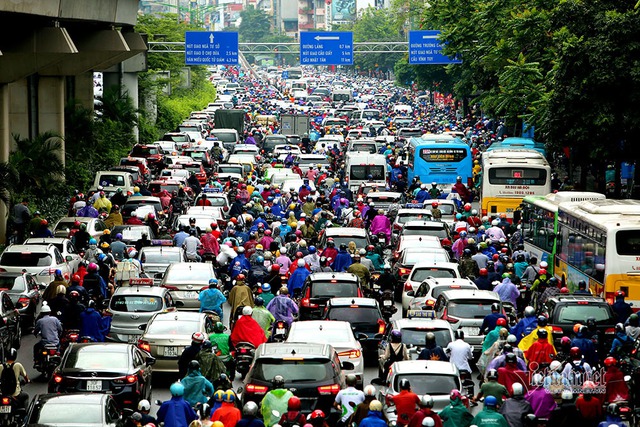Capital doubles efforts to address traffic congestion
VGP - Ha Noi has applied information technology to traffic management and administration, focusing on deploying intelligent traffic systems in a bid to tackle traffic congestion.

Illustration photo
In recent years, the city has made significant investments in road infrastructure, resulting in the completion and operation of several key projects. These include the construction of the Nga Tu So - Nga Tu Vong section of the elevated Ring Road No.2, the Le Van Luong underpass, and the Chua Boc - Pham Ngoc Thach overpass.
A comprehensive multimodal public transport network has also been established, with notable projects such as the Cat Linh - Ha Dong light railway, which is already operational, and the ongoing construction of the Nhon – H Nnoi urban railway line.
The bus network covers 30 districts, extending services to 512 out of 579 communes, wards and townships, and connects with neighboring provinces such as Hung Yen, Bac Ninh, Bac Giang, Hai Duong and Vinh Phuc.
Tran Huu Bao, Deputy Director of the Ha Noi Department of Transport, said that despite efforts to reduce traffic congestion in Ha Noi, the situation remains complex due to a significant increase in the number of vehicles operating in the city and the limited amount of land allocated for traffic.
Recent statistics show that the capital has more than 7.9 million vehicles, including 1.1 million cars and 6.6 million motorcycles. The average annual growth rate for cars has exceeded 10 percent between 2019 and 2022, while motorcycles have seen a growth rate of over 3 percent per year.
Moreover, about 12 million vehicles from other provinces and cities ply Hanoi's roads. The land area allocated to transport for new urban construction in Ha Noi is only about 10.3 percent of the total, with an average annual growth rate of only 0.26-0.3 percent. The land allocation for static traffic is less than 1 percent, and public transport ridership is growing at 18.5 percent.
"These factors contribute to the inevitable occurrence of traffic congestion," said Bao.
With a vision for 2050, Ha Noi's focus is to ensure that 20-26 percent of the central urban area is devoted to transport and urban development, according to Ha Noi's Transport Planning to 2030.
In this regard, the city aims to allocate 3-4 percent of the land for static traffic works and places a strong emphasis on developing the public transport system so that it can meet 50-55 percent of the urban transport demand in the metropolitan area by 2030 and 60-70 percent after 2030, effectively tackling traffic congestion./.

